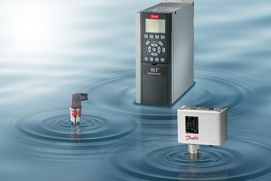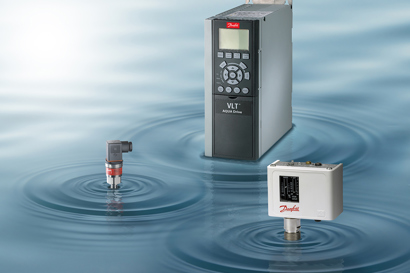According to the International Energy Agency’s 2016 World Energy Outlook report, the water industry consumes 4% of all global electricity – equaling Russia’s entire electricity consumption. This amount is expected to double by 2040. At a local level, this means that today, water supply and wastewater treatment already account for as much as 30-50% of a municipality’s total energy bill.
At the same time, studies show that 90% of all global power generation is water-intense and that global energy consumption is expected to increase by 50% by 2035. This is mainly due to increased urbanization, global population increase, and growing demands from a larger middle class, which is putting even more pressure on the demand for food, water and energy. Altogether, this will lead to a global increase in water consumption
of 40%. Needless to say, finding ways to reduce energy and water consumption needs to be a key objective for policymakers and the water industry worldwide.
Countries and waterworks worldwide are wasting water
Despite these facts, non-revenue water levels around the world differ from around 6% to as much as 80%. And the average amount of water wasted by waterworks is 25-30% – mainly due to errors, leakages and water pressure. This leaves room for great improvements throughout the entire water cycle everywhere – and the good news is, that technologies to reduce energy consumption and leakage at all stages of the water supply
system already exist. In fact, if the worldwide non-revenue water level was brought down to 6% as it is in Denmark and Japan, we would be able to save up to 130 TWh globally. This figure corresponds to Poland’s entire electricity need.
Pressure management is key to reduce water and energy loss
Water facilities divide breaks into main breaks and service breaks. A main break is when there is a leak from a pipe and water is pouring out. These breaks are easy to detect and can be fixed within hours. However, it gets a lot more difficult with service breaks. These are identified as water that is dripping throughout the whole system 24/7 365 days a year. To bring down the non-revenue water level *) it is extremely important
to put great effort into reducing all service breaks in the systems. One way to do this, is by lowering the pressure in the system by splitting the network into pressure zones. At the same time, many overlook the fact that a significant amount of energy is used in pumping the water up, handling the water, and putting the under pressure water for distribution. And often the pressure in large parts of the water distribution network is much higher than needed, to ensure the most remote customer has minimum pressure. As a consequence, even more water is lost through leakage in the system. And more new leaks occur. Hence, better and more intelligent pressure management is a key factor in bringing down energy consumption and water loss at all
stages of the water supply system – from production and distribution to pumping and treatment. And pressure sensors and variable speed drives are key components in pumps and booster pump systems throughout the whole distribution system.
Read more
-
if (isSmallPicture) {


 Water supply
Water supplyClose to one third of the world’s population currently lives in water stressed and scarcity areas. Danfoss has solutions that can help communities reduce their water loss, save energy and reduced investment in pipe replacement.



